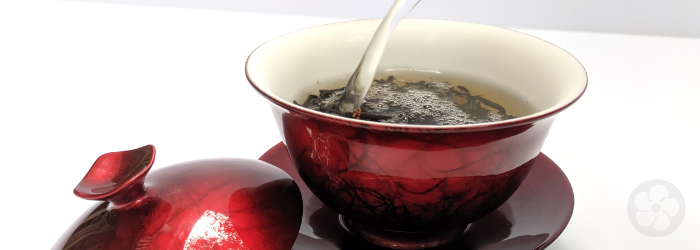What is Dry Brewing?

Despite a reputation as a formalized ‘tea ceremony’, there are many variations of the traditional gong fu cha brewing method. Most demonstrations utilize showy displays of rinsing and pouring to create drama, using a large tray to capture excess water during the brewing process. The elaborate setup, however, necessitating several pieces of teaware and a specialized tray, can be a barrier for beginners hoping to brew this way at home.
Find step-by-step instructions for brewing gong fu cha >>
The current trend, however, is a modern interpretation called ‘dry brewing’, which minimizes the amount of spillage as much as possible, and usually replaces the draining tray with a large bowl to collect excess rinse water. At first sight, this method may seem more approachable, but brewing with such precision actually requires more skill and specialized equipment.
Brewing without spilling a drop requires practiced expertise in pouring and utmost concentration. In contrast to the showy methods that use an abundance of excess water, dry brewing is seen as a more meditative, poised practice. In many ways, it is a direct reaction to the use of tea to display wealth, a common practice in tea-obsessed China. Dry brewing devotees see excessive pouring, rinsing, and splashing as ostentatious, while their own methods display class and elegance.
Dry brewing also serves to display the quality of teaware, as each tool must be able to deliver a clean pour, without dribbles. Sharply crafted spouts, tightly fitted lids, and delicate rims that pour without spilling a drop are harder to craft, and therefore more expensive. Finer materials, like the dense clay of Yixing or Jingdezhen, are easier to craft with such precision, but also cost more.
In practice, our preferred method of brewing is somewhere in between the two styles we’ve discussed here. Though we don’t pour excess water from splashy heights or undertake elaborate rinsing rituals, we still prefer to serve tea on a draining tray to account for minor spillage, and focus more on the flavor of the brew than on the precision of our movements while serving.
Ultimately, excess water (or lack thereof) during the brewing process is an aesthetic and stylistic choice, and should have little effect on the actual infusion. We recommend experimenting with elements of every style to find the brewing method that you like best.
Tell us about your favorite brewing techniques in the comments below! What effects do they have on the flavor of your tea?
Sign up for our newsletter to get blog updates in your inbox!





Comments on this post (0)